The Heart of Digital Innovation for Small and Medium-Sized Enterprises as Seen by Daiya Seiki and the SMBC Group
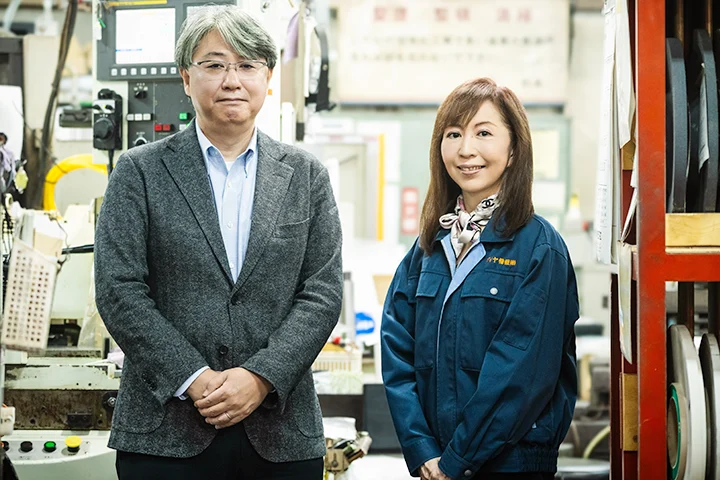
Executive Officer Naoki Shiraishi, General Manager of Sumitomo Mitsui Financial Group's Digital Solution Division, discussed topics such as digital innovation and digital transformation (DX) for small and medium-sized enterprises (SMEs), and Takako Suwa, president & CEO of Daiya Seiki, a small factory in Tokyo's Ota City
Daiya Seiki's own DX and why digitalization is also vital for SMEs
When the founder of Daiya Seiki suddenly passed away in 2004, his daughter Takako Suwa, then a 32-year-old homemaker, took over the small precision metalworking factory and became its second president. She made dramatic reforms to the company, such as overhauling its production management system, and rescued the company from its financial difficulties. Executive Officer Naoki Shiraishi, General Manager of the Digital Solution Division of Sumitomo Mitsui Financial Group, is one of the leaders of the digital business activities in SMBC Group, which has gone beyond the boundaries of finance to create countless digital services and support the DX of SMEs.
Why is digitalization vital for SMEs? What are the secrets to successful digitalization and DX? The two discussed these and other questions based on their own experiences.
President Suwa, you started making managerial reforms immediately upon being appointed as president, and you took the lead among small factories in overhauling your company's production management system. What led you to do this?
When I became president, business was struggling, and instituting reforms was essential. That's why we implemented three years of reforms: "Reforming Our Mentality (the first year)," "Taking on Challenges (the second year)," and "Maintaining, Continuing, and Developing (the third year)." In the second year of reforms, we took on the challenge of updating our production management system.
We asked our clients what they thought our strengths were, and we found that while our technical capabilities were highly rated, they considered our greatest strength to be our ability to handle sudden requests. At the time, we were engaged in extremely high-mix, low-volume production, making 10,000 different products in a month. To further increase our responsiveness, we needed to implement thorough management. With our system at the time, when orders were received, production management was done on individual employees' notebooks or on desktop computers.
We overhauled our production management system to manage production progress and ensure that we could properly handle rush orders.
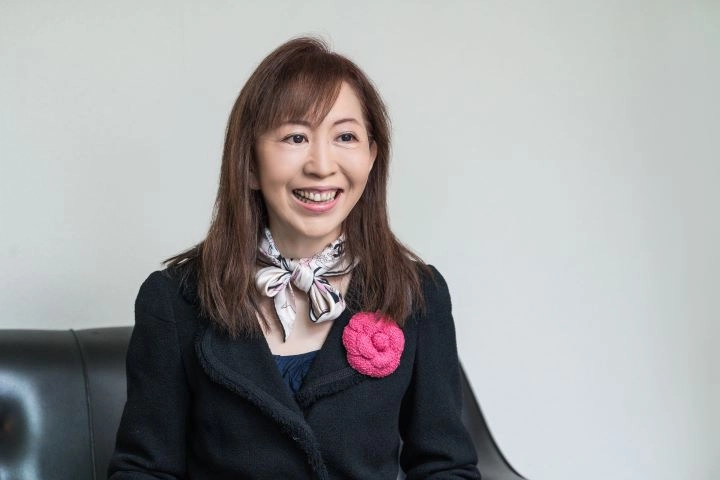
President Takako Suwa
In 2021, we did our second major update. In the new system, all sales and design information was centrally managed and shared using tablet devices. This reduced the time required for communications between sales personnel and production site workers, improving workplace productivity.
As a result, it became clear what work should be prioritized. The number of late shipments fell significantly, and we succeeded in achieving an even higher level of “responsiveness”.
Taking into consideration the tremendously significant trend of population decline, DX will be vital for SMEs in the future. For example, Generation Z, who are digital natives, place a great deal of importance on using time efficiently.
We're also in an era in which changing jobs has become commonplace, and work that relies on implicit understandings is no longer feasible. Environments need to be created in which operations can continue even if the personnel change. Companies need to bite the bullet and implement DX, implementing reforms aligned with the times to come.
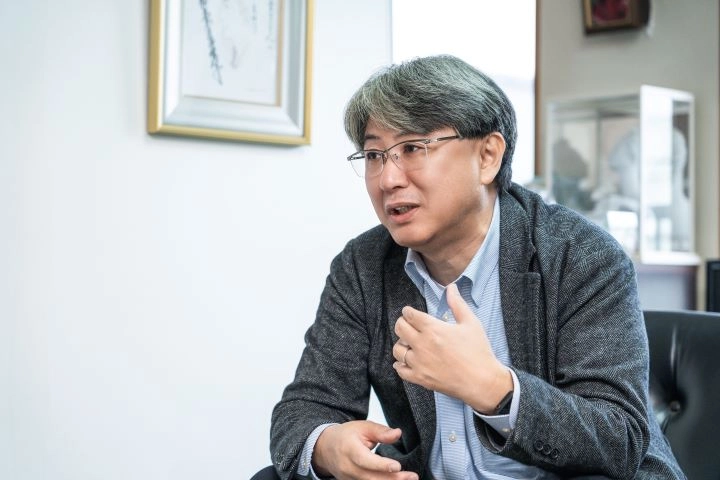
Naoki Shiraishi
Executive Officer and General Manager of the Digital Solution Division
The same can be said for micro-level business environments. Our main clients are automotive manufacturers, and they're in a period of major transformation. If electric vehicles (EVs) become the predominant type of vehicle in the future, the number of components will drop significantly and production sites will increasingly move overseas, so the amount of work done in Japan will decrease. There won't be any work for companies who passively wait for work to come to them.
Companies need to actively use the power of digital technology to further reinforce their own strengths, such as by increasing the added value of their products and services.
Large financial institutions such as megabanks are also rapidly increasing their use of digital technologies. I was surprised to discover that the SMBC Group's digitalization efforts weren't limited to SMBC alone, but have focused on providing DX support to SMEs and more than 10 subsidiaries are already providing digital services. Would you say this is a result of our changing times and the major changes happening to the business environment?
Today, even banks need to digitalize and expand into new business areas
Digitalization has been accelerating throughout society since the pandemic. With this has come an influx into the finance sector of non-finance companies—IT companies known as "platformers."
Bill Gates, the founder of Microsoft, once said "Banking is necessary, banks are not." This suggests that banks won't survive unless they change.
SMBC Group has been at the forefront of DX within the finance industry since around 2013.
Our digital businesses include PlariTown, which assists with the digitalization of SMEs, and SMBC Cloudsign, which has contributed significantly to the popularization of electronic contracts. We're expanding our range of businesses and services, both financial and non-financial, to help address the problems faced by SMEs and by society itself.
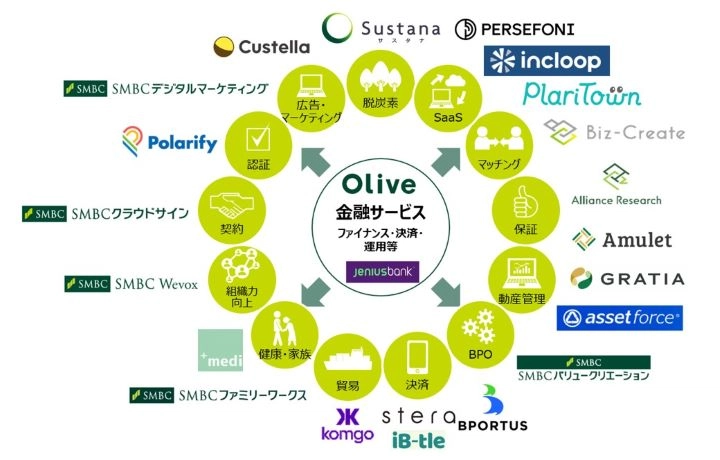
Having looked at businesses like this has made it clear how difficult DX is for SMEs. For example, when you switch from analog to digital, first you need to visualize the current analog processes and replace them with digital processes. But companies will find that they don't have anyone with the time to do this, so people can't make full use of the digital tools they've introduced, or people in the field refuse to use the digital tools. Another problem is when companies digitalize the parts they can, but they can't integrate entire processes in their systems, so their efforts don't produce efficiency improvements. Or the system is too matched to their analog work, so they can't update their tools and procedures themselves.
What do you think are the key points when SMEs implement digitalization and DX?
What SMEs should do first when they implement DX
The most important thing is to first define your goals. If you have clear goals, like "reduce paper usage" or "visualize operations" or "improve machine yield," you can identify the problems involved—your shortcomings—so you can create measures for addressing them.
In addition, based on our own experience, I think there are three secrets to success. The first is to listen to employees and to tackle the challenge together. The second is to try to use the most important software functions from the start. If you overextend and try to use all the different functions offered by a software package, you may find that you can't use any of them well, and your efforts end up being half-baked.
When we overhauled our production management system, we focused only on production management and the management of accounts payable and receivable. It's important to start small and gradually step things up. In a marathon, if you think about running 42.195 kilometers, you might feel like just giving up, but if you set a goal of running one more kilometer, you can keep pushing forward. It's like that.
The third secret to success is developing habits. They say that if people do the same thing at the same time for two weeks, it becomes a habit. When we introduced the information sharing tool, we required employees to open their tablets and check the information three times a day, in the morning, at midday, and in the afternoon.
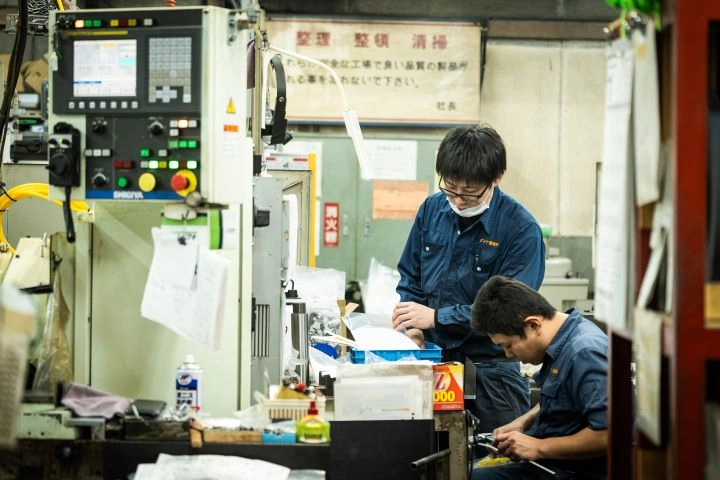
I see. So it's important to carefully analyze the current situation, determine what you need to do, and decide what direction to take. Then, when you've decided what to do first, you need to keep moving forward, even if it's only a little at a time. You can't digitalize operations without first visualizing them, so I think it's important to start out by analyzing and clarifying operations.
The first thing I did was review and revise operations and operating processes to thoroughly standardize operations. As I said earlier, our company's strength is our quick responsiveness, but we were doing a lot of unnecessary work.
There are three ways of implementing DX: having system engineers create designs based on your company's operating processes, customizing base systems, and using packaged software. Each approach has its own advantages and disadvantages. We chose to use packaged software that met our requirements of being inexpensive and easy to operate.
We also looked for and introduced software in our factory, which manufactures a wide variety of products, that enabled us to manage production in real time by easily entering information using barcodes. That was the first step of our DX.
When you modify operations to align them with packaged software, it's common to encounter resistance from experienced employees. Until people get used to the system, experienced personnel and intuition are often faster. Have you experienced this in Daiya Seiki?
We emphasized how much easier the system would make things, like eliminating the need to write daily reports. For example, if it took one person 10 minutes to write a daily report, then for 20 people that would add up to 200 minutes per day. Over the course of 30 days, that's 100 hours. We pointed out to employees how much time the system saved.
The vendor and I also gave presentations on the need for a new production management system and the benefits it would offer. We conducted questionnaires to gather questions about the presentations and then gave follow-up presentations to answer those questions. We kept repeating this process over and over, and gradually there were no more questions. But then we started to get complaints.
Complaints?
Yes. "There are too many buttons" or "There should be an undo function here." But by customizing the system based on this feedback, people came to think of the system as something they had built up themselves, and they began using it extensively.
If workers see something new as being useful in their work, they'll flexibly welcome it.
Shutting down an old system takes one to three months even for a major corporation. In our case, there were people who had never even turned on a computer, so I thought it would take six months to a year or so, but in reality, we finished the whole process in just three months.
The determination of top management is paramount
Listening to your experience reaffirms how important it is for top management to take the lead, declare that the enterprise is going to implement DX and continuously share information, and build up motivation among members in the organization.
Exactly. If top management fails to demonstrate clear direction, employees will become anxious.
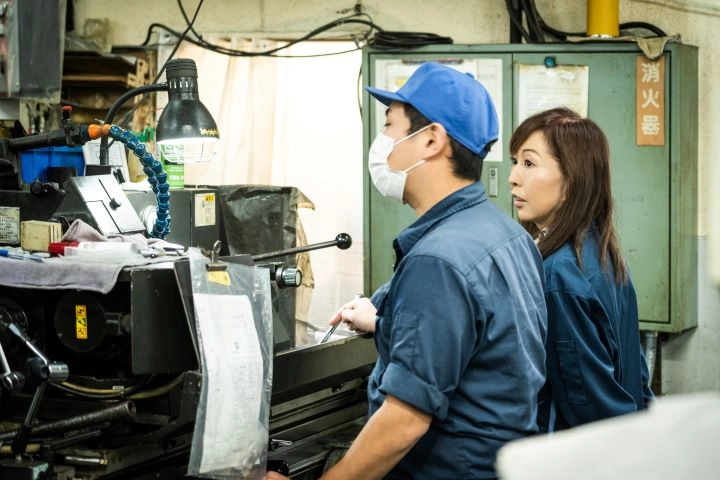
The same is true for large corporations. SMBC Group is going beyond the bounds of conventional financial business to actively take on new business segments because of the unwavering resolve of our previous CEO, (Jun) Ota, who constantly encouraged employees to break the mold. Our current CEO, Nakashima, who was appointed in December 2023, has maintained this same policy under the slogan of "Make a breakthrough."
For example, in SMBC Group, to foster a culture of creating new and unprecedented business, we have what we call "producing new CEOs," supporting employees who break the mold of finance or banking culture to take on new challenges and selecting people who create new business ideas as CEOs of internal venture companies, so far we've already created over 10 subsidiaries through this new CEO production approach. We're not just implementing DX but working to transform the culture of our entire bank.
I've felt how our members and our company have changed as a result of the different transformation measures we've implemented, and I think our management has created a system that supports those measures. Digitalization and DX actively led by top management, I feel, have a major impact on corporate culture.
While we were carrying out our digitalization, we were also dedicating ourselves to hiring and developing young employees. When I became president, only 3 of the 27 people in our company were younger than me. Over 60% were aged 50 or older. Now, over half of the workers on the production floor are in their 30s or under. We've significantly rejuvenated our workforce.
This increase in the number of young workers has brought about major changes to our corporate culture and atmosphere. As I stated earlier, it's important that top management first clearly define their goals and then that they work towards them, little by little.
Have a look at this. It's a sample of our ultraprecision machining, with a 5-stepped surface. Touch it. Can you feel the differences in the surface heights?
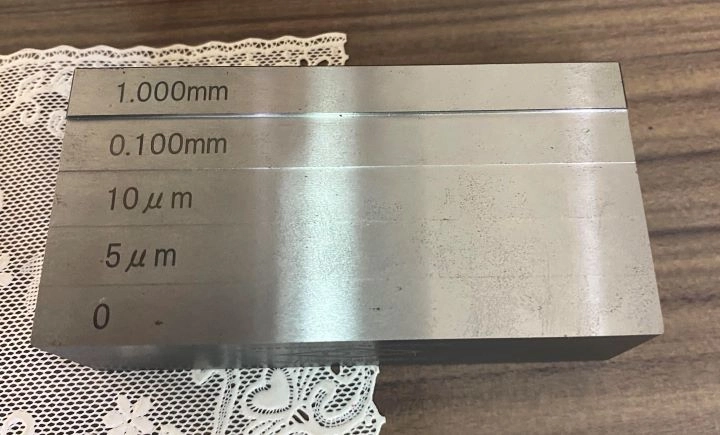
(Running his fingers over the sample) When I reach the smallest step, I can't feel a thing. I can just barely make out a line... (laughs)
The biggest step is 1 millimeter, and the smallest is 5/1000 of a millimeters, or 5 microns. They say that for the average person, the perception limit of the human finger is five microns.
We can create steps of just one micron. This isn't something that could be done by machines alone. We've been creating products using these ultraprecision machining technologies since our company was founded. If we don't pass on these technologies into the future, there will be no future for SMEs like our own.
This is a truly wonderful technology that Japan can be proud of. I'm worried that if Japanese companies don't use digitalization to expand on their strengths and carry them on into the future, Japan will gradually lose its advanced technologies and skills.
Digitalization isn't an end, it's a means to an end. It's important to perform digitalization and improve efficiency wherever possible to create environments where people can devote more time and effort to polishing and passing on technologies that provide high levels of added value.
Talking to you today has further motivated me to expand and enrich the range of digital services offered by SMBC Group to meet the needs of our customers.
We've also improved our operational efficiency by digitalizing indirect operations, achieving sustainability. I'm sure there are still a lot of SMEs that could produce greater profits using the same approach. I hope SMBC will continue to support the DX and reforms of SMEs.
---
Source:
Diamond Online tieup advertisement, published December 18, 2024
-
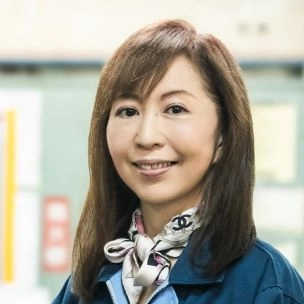
President of Daiya Seiki
Takako Suwa
Takako Suwa was born in Tokyo's Ota City in 1971. After graduating from Seikei University's Faculty of Engineering in 1995, she joined Unisia JECS (now Hitachi Astemo). In 1998, she joined Daiya Seiki upon the invitation of her father, its founder, but left as a result of disagreements about the company's business approach. When her father passed away in 2004, she was appointed the president of the company. She won the Nikkei Woman of the Year Grand Prize in 2013. She is an expert on the New Capitalism Implementation Council, part of Prime Minister Ishiba's Cabinet, a position that she also held under the Kishida administration. She is also an outside director of Japan Post Holdings and Nippon Television Holdings.
-
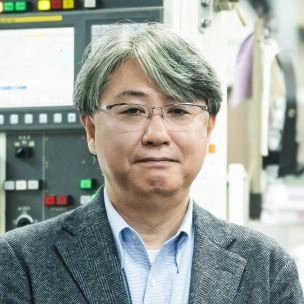
Executive Officer and General Manager of the Digital Solution Division in Sumitomo Mitsui Financial Group
Naoki Shiraishi
Naoki Shiraishi joined Sakura Bank (now Sumitomo Mitsui Banking Corporation) in 1993. After working in the planning and marketing divisions of the Wholesale Business Unit, he became the general manager of the Corporate Digital Solutions Department in 2020. In 2021, he became Executive Officer and General Manager of the Digital Strategy Department in Sumitomo Mitsui Financial Group, and in 2024, he was appointed to his current position as Executive Officer and General Manager of the Digital Solution Division. He is responsible for digital transformation (DX) and new digital business development in SMBC Group.
